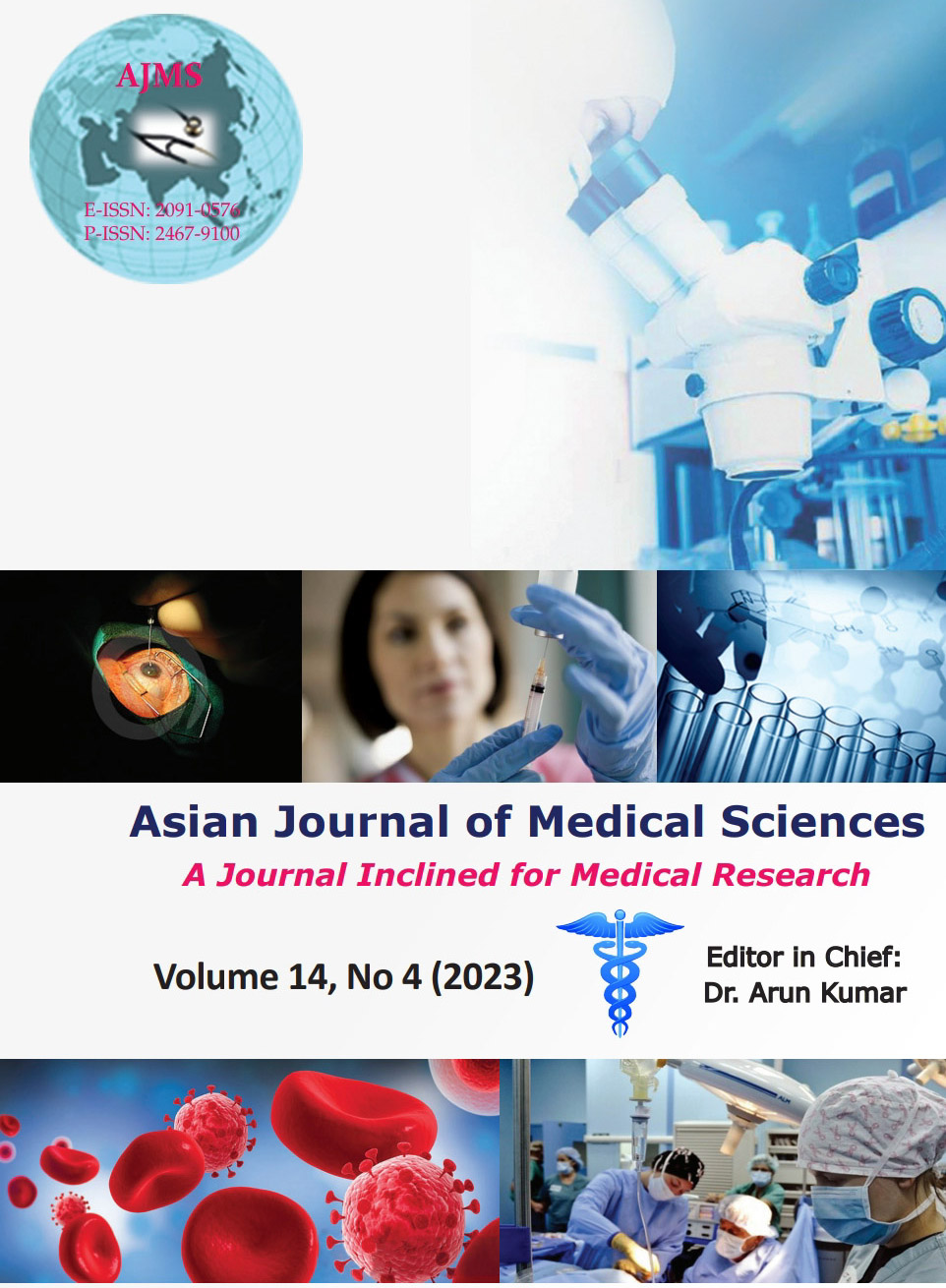To study fasting and post prandial lipid profile in type 2 diabetes mellitus in comparison to non diabetics
Keywords:
Diabetes mellitus; Fasting and postprandial lipid profile; Very low-density lipoproteins-cholesterol-C (LDL-C); Triglycerides (TG); High-density lipoproteins-cholesterol (HDL-C)Abstract
Background: Postprandial diabetic dyslipidemia creates proatherogenic conditions which are associated with microvascular and macrovascular complications. Its timely identification might help prevent complications.
Aims and Objectives: The aims of this study were to assess the fasting and postprandial lipid abnormalities in type 2 diabetes mellitus (DM) in comparison to non-diabetic patients attending SGMH, Rewa, M.P.
Materials and Methods: This was a cross-sectional case–control study done from April 2021 to March 2022 in SSMC and SGMH Rewa (M.P). 200 cases and 200 controls taken as per inclusion and exclusion criteria, age, and sex matched. Relevant examination and investigations including fasting and postprandial lipid profile were done. All data compiled and compared with the previous studies.
Results: The comparative findings of fasting and postprandial lipid profile in type 2 DM compared to controls (non-diabetics) revealed the following observations. In fasting state, 56% cases and 30% controls had triglyceride levels of >150 mg/dL, while, in postprandial state, it was 82% cases and 32% controls. In fasting state, 28% cases and 8% controls had very low-density lipoproteins-cholesterol (VLDL-C) levels of >40 mg/dL, while, in postprandial state, it showed 46% cases and 14% of controls. In fasting state, 70% cases and 60% controls had high-density lipoproteins-cholesterol (HDL-C) levels of <35 mg/dL, while, in postprandial state, it was found in 80% cases and 58% controls.
Conclusion: In the postprandial state, there was significant hyper-triglyceridemia, increased VLDL-C, and decreased HDL-C levels in cases than controls. In the fasting state, there was significant hyper-triglyceridemia and increased VLDL-C levels in cases than controls.
Downloads
Downloads
Published
How to Cite
Issue
Section
License
Copyright (c) 2023 Asian Journal of Medical Sciences

This work is licensed under a Creative Commons Attribution-NonCommercial 4.0 International License.
Authors who publish with this journal agree to the following terms:
- The journal holds copyright and publishes the work under a Creative Commons CC-BY-NC license that permits use, distribution and reprduction in any medium, provided the original work is properly cited and is not used for commercial purposes. The journal should be recognised as the original publisher of this work.
- Authors are able to enter into separate, additional contractual arrangements for the non-exclusive distribution of the journal's published version of the work (e.g., post it to an institutional repository or publish it in a book), with an acknowledgement of its initial publication in this journal.
- Authors are permitted and encouraged to post their work online (e.g., in institutional repositories or on their website) prior to and during the submission process, as it can lead to productive exchanges, as well as earlier and greater citation of published work (See The Effect of Open Access).




